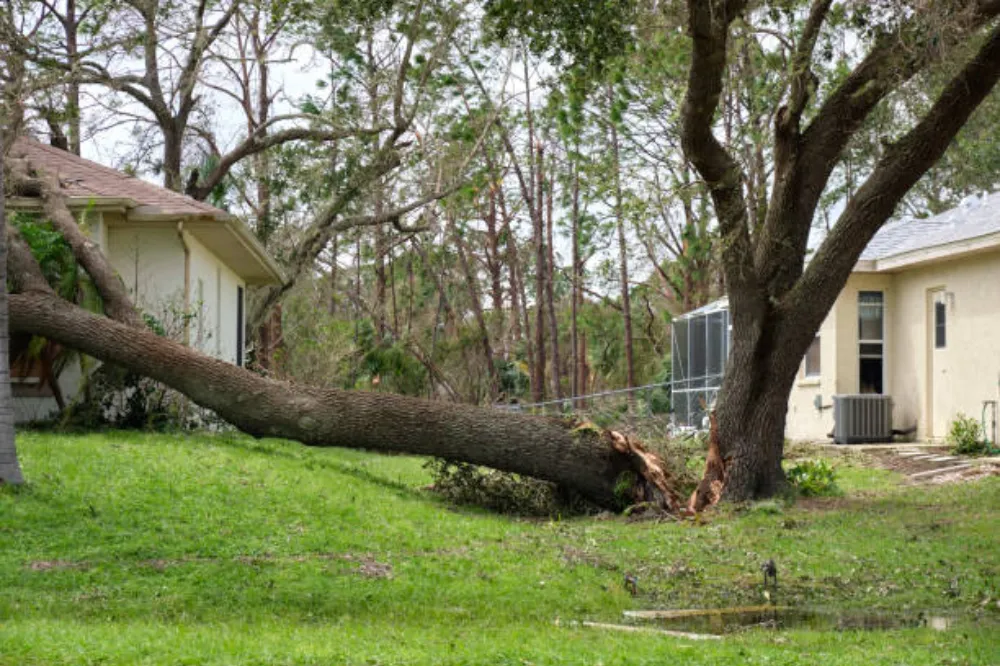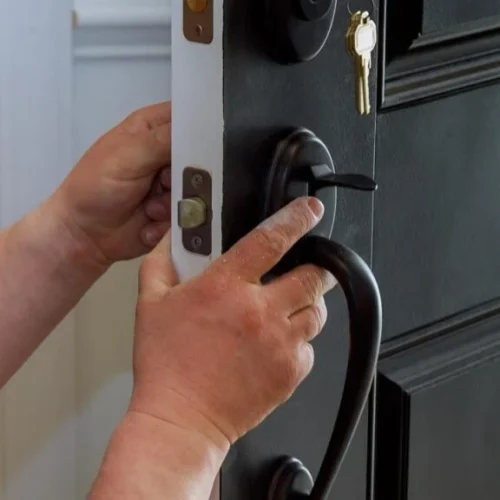
A dying tree often gives early warning signs long before it becomes dangerous. You might notice brittle branches that snap easily, bark that starts peeling, or leaves that grow slower each season. These signs may seem small, but they can signal serious internal decay.
According to the U.S. Forest Service, falling trees injure over 100 people each year in the U.S. and cause nearly $1 billion in property damage. That’s why regular tree checks are essential.
Charleston Tree Services helps homeowners spot these issues early and remove risky trees safely.
In this article, you will learn five common warning signs it might be time to remove your tree.
1. Look For Dead Branches & Cracks
A healthy tree has strong bark, flexible twigs, and full green leaves in the growing season. However, if branches turn dry, snap with little pressure, or hold dead leaves long after fall, it’s a warning!
Dead branches can break suddenly, often without any warning.They are a major reason why trees cause property damage during storms, as falling branches can hit roofs, cars, or power lines.
Cracks or deep splits in the trunk and large branches act like open doors for water, fungi, and insects. Once they get inside, the tree starts to rot from within, losing its strength over time.
Research shows that many trees that collapse during storms already had these hidden weaknesses long before they fell. When about 40% of a trunk or major limb is decayed, the chances of it breaking apart rise sharply, especially in strong winds or heavy rain. For this reason, homeowners should regularly consult a professional tree service in Kalamazoo MI for preemptive inspections and structural trimming to mitigate the risk of property damage from tree failure.
Even a small crack can grow quickly after bad weather and become a serious danger. Homeowners should never ignore deep cracks. Take clear photos, keep people and cars away, and call a certified arborist for help. A timely inspection can make all the difference between saving your tree and losing it completely. For expert assessment and safe removal, homeowners can rely on a certified arborist in Mount Vernon, WA to evaluate tree health, identify hidden risks, and recommend the best course of action.
2. Check For Fungi, Pests, Or Root Damage
Fungi, pests, and root damage often work together to slowly weaken a tree from the inside out. Fungal infections are usually the first sign of trouble.
When mushrooms, conks, or other fungal growths appear near the base or along the trunk, it means decay has already reached the inner wood.
The U.S. Forest Service notes that decay fungi can reduce a tree’s structural strength by nearly 70% before collapse occurs. This weakened wood then attracts pests such as borers, termites, or bark beetles, which feed beneath the bark and block nutrient flow.
You might also notice small holes, sawdust, or sticky sap leaking from the surface. Over time, this internal damage extends to the roots. Compacted or decayed roots can’t anchor the tree or draw water, leading to wilting leaves, leaning, or sudden toppling during storms.
3. Notice Sudden Leaf Loss Or Hollow Trunks
Most trees warn us early when something is wrong, and two of the clearest signals are sudden leaf loss and hollow trunks.
Leaves are one of the best indicators of a tree’s overall health. When a tree drops leaves unexpectedly in spring or summer, it often means its vascular system is breaking down. The roots may be suffocating from rot or starving from compacted soil, cutting off water flow. In some cases, insect damage or fungal infection triggers premature leaf drop as a survival response.
A hollow trunk is an even more advanced warning. Studies from the University of Florida show that when internal decay removes more than one-third of the trunk’s thickness, stability drops drastically. Though the outer bark may appear solid, the inside can be soft and empty, leaving the tree one strong wind away from collapse.
4. Storms Can Weaken Trees — Inspect Closely
Storms can leave trees looking strong on the outside but weak inside. Powerful winds twist branches, heavy rain softens the soil, and lightning can burn or split the trunk. All of this hidden stress slowly weakens the tree’s structure.
Even healthy trees can turn risky after severe weather. After every storm, it’s important to look closely for signs like leaning, cracked bark, or raised soil near the roots. These are early warnings that the tree might not recover.
Research from the International Society of Arboriculture shows that storm damage is one of the main reasons trees need to be removed. Sometimes decay or root breaks are not visible right away, but weeks later the tree can suddenly collapse.
Quick inspection and timely removal can prevent serious damage. For homeowners in the region, relying on a 24/7 emergency tree service in Cornelia and Northeast Georgia ensures that any hazardous or storm-damaged trees are handled safely and efficiently, protecting both property and loved ones.
5. Watch Out For Issues From Poor Pruning Or Neglect
Poor pruning and long-term neglect often reveal clear signs that a tree’s health is in decline.
One of the first things to notice is when branches are cut too close or left uneven. These improper cuts fail to heal and often invite moisture, fungi, and pests inside. Research on Tilia cordata found that excessive pruning increases the risk of fungal infection and internal dieback. Both conditions can lead to serious structural instability and signal that the tree may no longer be safe to keep standing.
If you see soft wood, oozing sap, or mushrooms growing near these spots, decay may already be spreading within.
Trees that go years without pruning show other visible clues. Their branches grow too close together, rub against each other, and form weak joints. Over time, the crown becomes thick and unbalanced, often leaning to one side.
Final Takeaway
Tree removal can feel like a difficult decision, but in many cases, it’s the safest way to prevent serious damage or accidents. Watch for warning signs like cracks, decay, or leaning trunks, and act early before the problem grows.













